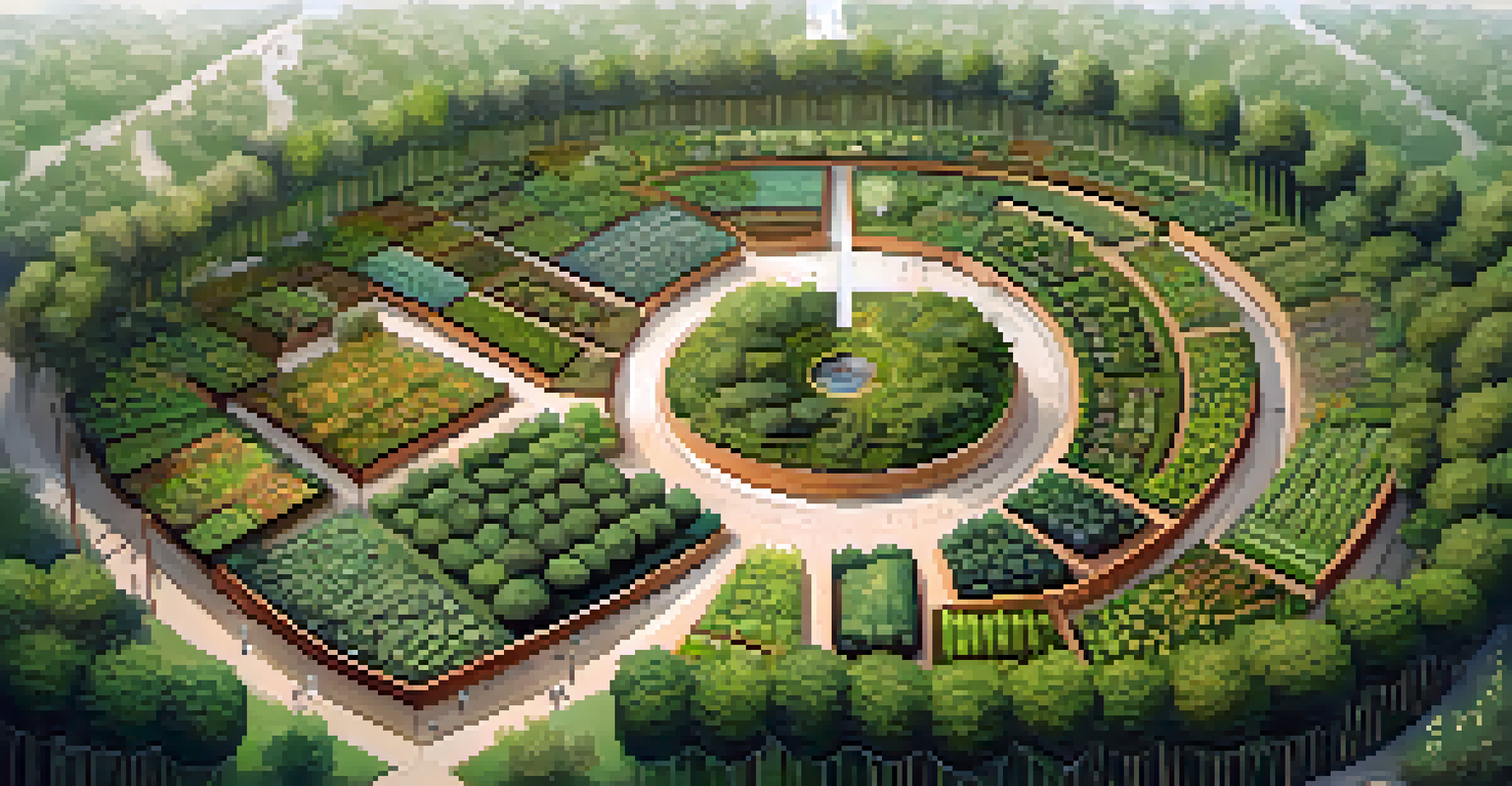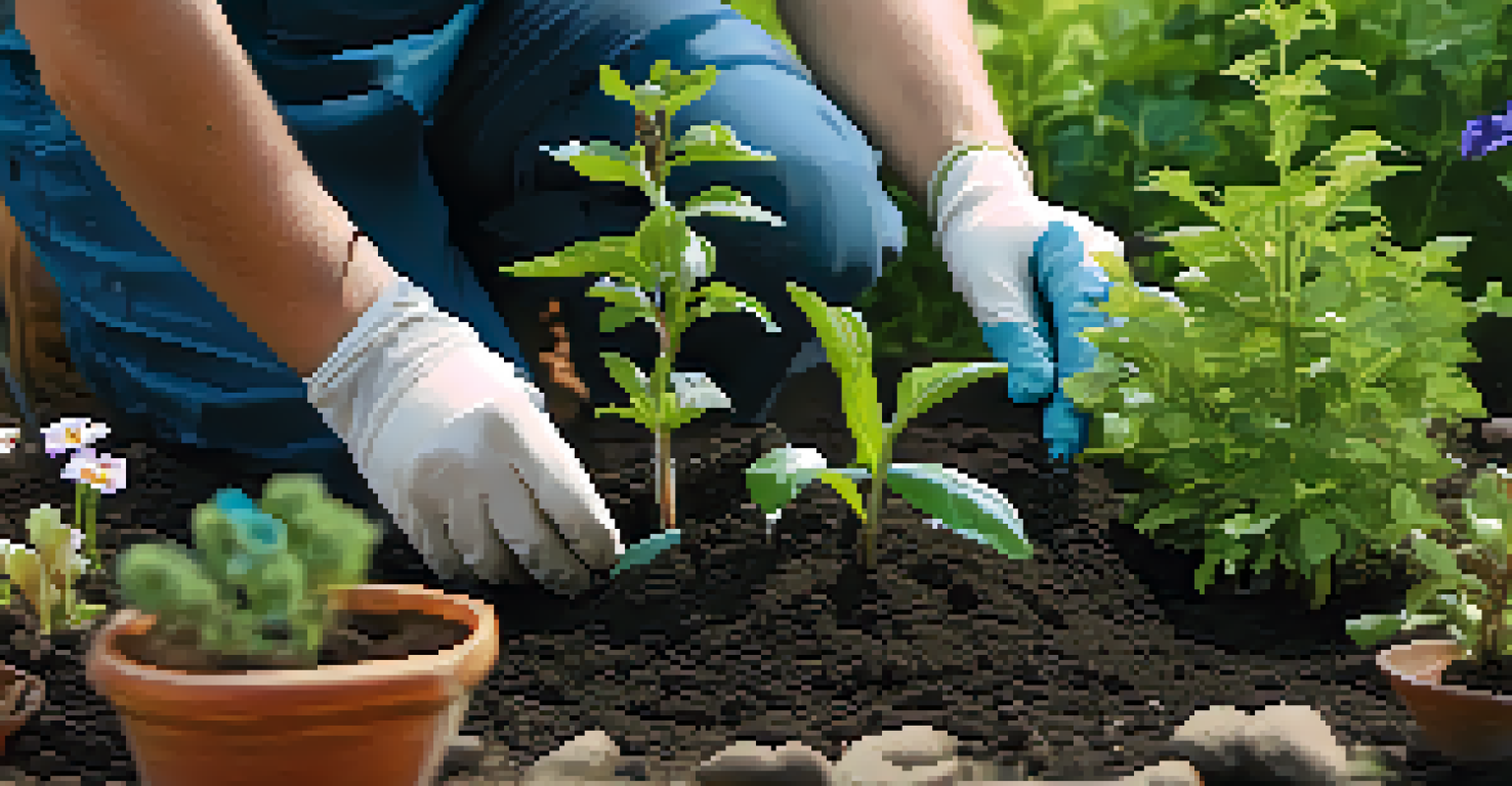Creating a Food Forest: A Permaculture Approach

Understanding Food Forests and Permaculture Principles
A food forest is a sustainable, self-maintaining ecosystem that mimics natural forest structures while providing food. This approach falls under the umbrella of permaculture, which emphasizes working with nature rather than against it. By integrating various plant species, food forests create a habitat that supports biodiversity and enhances soil health.
The greatest threat to our planet is the belief that someone else will save it.
In essence, permaculture is about designing landscapes that are productive and resilient. It encourages us to observe natural ecosystems and apply those principles to our own gardening practices. This method not only yields food but also nurtures a balanced environment that can flourish over time.
Think of a food forest as a community where trees, shrubs, herbs, and vegetables coexist harmoniously. Just like a diverse group of people brings unique strengths to a team, a variety of plants contributes to the overall health and productivity of the ecosystem.
Choosing the Right Location for Your Food Forest
Selecting the perfect spot for your food forest is crucial to its success. Ideally, you want a location that receives ample sunlight, has good drainage, and is sheltered from harsh winds. Observing your yard throughout the seasons can help identify microclimates that might be more suitable for certain plants.

Consider the existing flora and fauna in your chosen area. Are there any established trees that could provide shade or support for your new plants? Understanding the natural ecosystem can guide you in selecting the right plants that will thrive alongside one another.
Food Forests Foster Biodiversity
Creating a food forest enhances biodiversity by integrating various plant species that support each other's growth and contribute to a resilient ecosystem.
A great way to visualize your food forest layout is to imagine how a natural forest grows. As you plan, think about layers: tall canopy trees, understory shrubs, and ground cover plants. Each layer has its role and contributes to the overall health of the forest.
Designing Your Food Forest Layout
Designing your food forest can be incredibly rewarding, as it allows you to get creative with space and plant selection. Start by sketching a layout that includes different layers of vegetation, such as tall trees, smaller trees, bushes, and herbaceous plants. This multi-layered approach not only maximizes space but also enhances biodiversity.
Nature does not hurry, yet everything is accomplished.
Consider the concept of companion planting, where certain plants support each other’s growth. For instance, growing nitrogen-fixing plants alongside fruit trees can improve soil fertility. This thoughtful arrangement mimics nature and promotes a thriving ecosystem.
As you design, incorporate pathways for easy access and maintenance. Think of these paths as roads in a city, providing essential routes for movement while minimizing disturbance to the plants. Well-planned pathways can also enhance the overall beauty of your food forest.
Selecting Plants for Your Food Forest
When it comes to choosing plants for your food forest, diversity is key. Aim to include a range of species that produce fruits, nuts, herbs, and vegetables. Native plants are a great choice as they are well-adapted to the local climate and require less maintenance.
Incorporate plants that serve multiple functions, such as providing food, attracting pollinators, or improving soil quality. For example, planting clover not only adds nitrogen to the soil but also attracts beneficial insects. This approach creates a dynamic ecosystem where every plant has a purpose.
Choose the Right Location
Selecting an ideal location with ample sunlight, good drainage, and consideration of existing flora is crucial for the success of your food forest.
As you select your plants, consider their growth habits and compatibility with each other. Just like people in a community, certain plants thrive better when they coexist with specific companions. Researching plant relationships can lead to a more harmonious and productive food forest.
Implementing Water Management Techniques
Water management is a crucial aspect of establishing a successful food forest. Effective water conservation techniques—like swales and rain gardens—can help capture and utilize rainwater efficiently. These methods not only reduce water waste but also promote healthier soil and plant growth.
Consider creating contour beds that follow the natural shape of the land. This design slows down water runoff and allows it to soak into the ground, nourishing the plants. Imagine a sponge absorbing water; this technique mimics that process in your food forest.
Additionally, mulching around plants can help retain moisture in the soil and suppress weeds. Think of mulch as a cozy blanket for your plants, keeping them warm and hydrated. This simple practice can significantly enhance the health of your food forest.
Embracing Biodiversity in Your Food Forest
Biodiversity is the heartbeat of a healthy food forest. By nurturing a variety of plant and animal life, you create a resilient ecosystem that can withstand pests and diseases. This diversity is akin to having a diverse team in a workplace; each member brings unique skills that contribute to overall success.
Encouraging beneficial insects, such as ladybugs and bees, can help with pollination and pest control. Planting flowers and herbs that attract these creatures can help create a balanced environment. For instance, planting marigolds can deter pests while attracting helpful pollinators.
Diverse Plant Selection is Key
Incorporating a variety of plants, especially native species, ensures adaptability to local conditions and promotes a thriving food forest.
Regularly observing your food forest will help you identify what’s working and what needs adjustment. Just as a good coach evaluates a team’s performance, you’ll learn to recognize the strengths and weaknesses of your ecosystem. This ongoing engagement fosters a thriving and vibrant food forest.
Maintaining and Harvesting from Your Food Forest
Once your food forest is established, maintenance becomes a nurturing process rather than a chore. Regularly checking on your plants, mulching, and pruning will ensure your ecosystem thrives. Think of it as tending to a garden of friendships; a little care goes a long way.
Harvesting from your food forest should be done mindfully, allowing plants to regenerate and produce more food. By practicing selective harvesting, you can enjoy the bounty while also supporting the growth of the ecosystem. This approach is much like picking fruit from a tree without stripping it bare.

In time, your food forest will not only provide sustenance but also create a space for relaxation and connection with nature. Imagine enjoying a fresh salad made from ingredients you grew yourself—there's nothing quite like it. This journey fosters a deeper relationship with the land and its resources.